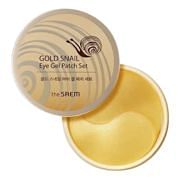Ever done a massive supermarket sweep only to find you can’t cram all your chilled goods into the fridge? We’re willing to bet the first thing to get left out of the cold (pardon the pun) is the jam, followed by all the condiments you’ve got knocking around in there. In fact it can be tricky to know just what needs to be kept cool and what will fair alright in the cupboard, so here we take a deeper look.

To put in the fridge or not, that is the question. © Cover Media
Tomato Ketchup
A staple in many houses, with the label stating it should be refrigerated after it’s opened for up to eight weeks. We’re pretty sure most of us have overlooked that little titbit, so what’s the real story?
Speaking to MailOnline, microbiologist Dr Peter Barratt explained that one of the reasons it’s recommended that the sauce be kept cool is because it contains less artificial preservatives and salt than it used to. Salt is a natural preservative, so when these ingredients were included in higher quantities keeping it in a cupboard was fine.
“The vinegar and tomatoes in ketchup give it a high level of acidity, which slows down bacterial growth,” he added to the publication.
“However, while ketchup could keep safely in the cupboard for a couple of weeks, it’s best kept in the fridge to slow the growth of potentially harmful micro-organisms and eaten within the stated eight-week period.”
Pickle
There’s nothing like a hunk of cheese slathered in pickle, which tends to state it should be refrigerated for up to six weeks. Dr Barrett claims that’s unnecessary because of the high levels of vinegar in it, with the acid in that stopping the growth of bacteria. Keep it cool in a cupboard and the professional suggests it should be OK for up to 12 weeks.
Strawberry jam
Again, jams tend to have high levels of acidity because they contain so much fruit. This stops bacteria growing, so it should be OK if kept at room temperature for six months. Be careful to use clean utensils in the jar though, as acid doesn’t protect against mould.
Soy sauce
This contains preservatives to stop mould and lactic acid which guards against bacteria, but not every type. To help it go the distance Dr Barratt suggests keeping in the fridge for up to six months.
Tabasco sauce
Most types state that storing in a cool, dry place is enough, but the microbiologist begs to differ.
“I would err on the side of caution and use this within eight weeks if unrefrigerated, or within six months if kept in the fridge, because, over time, some bacteria can tolerate and grow in acidic and salty conditions,” he explained to the website.
“The label says the colour can change with no impact on the sauce, but this means chemical changes are occurring, so the sauce is not the same as when it was opened, even though it may be safe to consume.” © Cover Media








